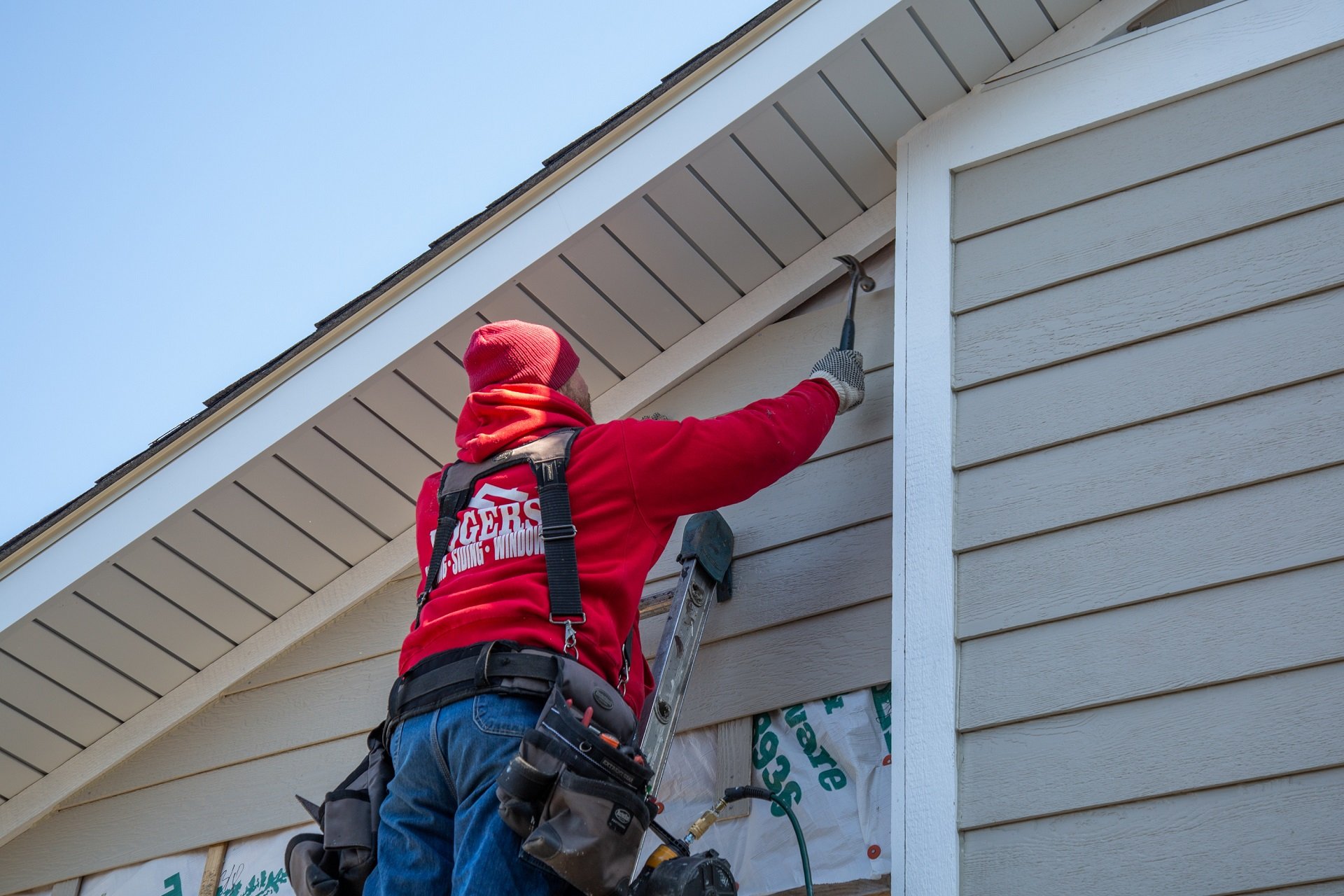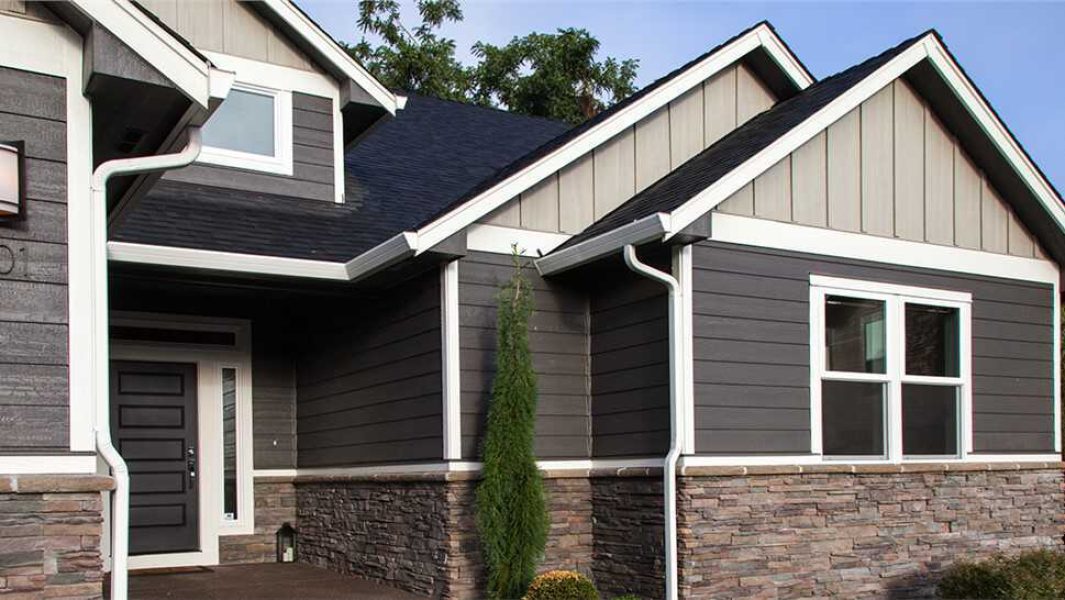Revealing the Importance of Picking the Right Exterior Sidings for Long-Term Longevity
When it comes to the architectural integrity and visual appeal of a structure, the choice of outside home siding plays a critical function. The longevity of exterior siding materials can substantially influence the longevity and general upkeep costs of a building. Nevertheless, the sheer range of house siding choices readily available on the market can make the decision-making procedure intimidating. Understanding the important aspects that influence the toughness of outside sidings is essential for making notified options that can stand the examination of time. By deciphering the complexities surrounding this decision, a more clear course in the direction of resilient and lasting siding services emerges.
Elements Affecting Siding Toughness
Taking a look at the installation process is essential in determining the factors influencing home siding resilience. Appropriate installation plays a significant role in ensuring the longevity and efficiency of outside home sidings. Aspects such as the usage of high quality materials, skilled labor, and adherence to supplier standards during installation are crucial for maximizing the toughness of home sidings.
The sort of product utilized for exterior sidings is a primary aspect influencing their durability. Products like vinyl, fiber metal, timber, and cement have various levels of longevity and need specific upkeep methods. In addition, exposure to ecological aspects such as sunshine, moisture, and severe temperatures can influence the long life of exterior sidings.
In addition, the quality of setup straight influences the resilience of house sidings. Improper installment can result in problems like bending, cracking, or water infiltration, jeopardizing the architectural honesty of the sidings. Working with experienced professionals and complying with right installment treatments are crucial steps in making sure the longevity of outside house sidings.
Effect of Weather
Climate condition significantly influence the performance and longevity of exterior sidings. Exposure to numerous climate components such as rainfall, snow, hail storm, UV rays, and rising and fall temperature levels can influence the longevity of house sidings with time. Consistent direct exposure to wetness from rainfall or snow can lead to water infiltration, triggering rot, mold, or mold development in exterior sidings made of materials like timber or fiber concrete. Extreme sunlight and UV rays can discolor the color and break down the finish of exterior sidings constructed from plastic or light weight aluminum. Icing up temperature levels complied with by defrosting can lead to expansion and tightening of home sidings, causing cracks or bending.
Selecting the ideal home siding product that can stand up to the certain climate problems of an area is vital for long-lasting toughness. Comprehending the effect of weather condition conditions on exterior house sidings is vital in making notified decisions to guarantee the longevity and performance of the siding investment.
Power Performance Factors To Consider
Provided the significant role climate condition play in figuring out the toughness of outside home sidings, it is vital to likewise take into consideration the energy efficiency implications when choosing one of the most ideal exterior siding material for a residential property. Energy effectiveness is a vital variable to consider as it directly influences a building's heating & cooling expenses. Going with energy-efficient siding products can add to preserving a comfy indoor temperature level throughout the year while potentially reducing power bills. Products such as insulated plastic, fiber concrete, and engineered timber exterior sidings supply improved power effectiveness by giving much better insulation for the home. These products assist in protecting against heat transfer, maintaining the indoor cooler in the summertime and warmer in the winter, which minimizes the lots on heating and cooling down systems. In addition, energy-efficient exterior sidings can additionally add to a more ecologically pleasant and lasting residential or commercial property by minimizing total energy usage. When deciding on exterior sidings, considering their energy effectiveness can lead to long-lasting price financial savings and an extra eco aware choice for the property.
Maintenance Needs and Expenses

In regards to costs, upkeep costs can differ commonly depending on the house siding material made use of. Vinyl house siding normally has lower upkeep costs contrasted to wood or fiber concrete siding, as it does not need frequent paint or staining. Nevertheless, it is vital to consider long-lasting upkeep costs when originally choosing a home siding material to make sure that the total lifetime expenditures align with your budget plan. Normal maintenance can help extend the life expectancy of outside sidings and avoid even more substantial concerns that may need expensive fixings in the future - house siding installers.
Longevity and Return on Investment
Recognizing the longevity of various exterior house siding materials is critical for residential property owners looking to maximize their return on financial investment. Choosing a house siding material with a lengthy lifespan can investigate this site dramatically affect the total cost-effectiveness of a home.
In terms of return on financial investment, house siding products that offer longevity can enhance the worth of a property. By considering the longevity of exterior house siding products, building proprietors can make enlightened decisions that benefit them in the lengthy run.
Verdict

The durability of siding materials can significantly more information impact the longevity and overall maintenance costs of a residential or commercial property. Comprehending the impact of weather more problems on outside home sidings is necessary in making notified choices to guarantee the durability and performance of the siding financial investment.
Offered the substantial function weather condition conditions play in determining the durability of outside home sidings, it is crucial to likewise think about the energy performance effects when choosing the most suitable siding product for a residential property. Vinyl siding commonly has reduced upkeep prices compared to wood or fiber concrete exterior siding, as it does not require constant painting or discoloration. By thoroughly considering these variables and selecting the right product, home owners can optimize the resilience and return on financial investment of their exterior house siding.